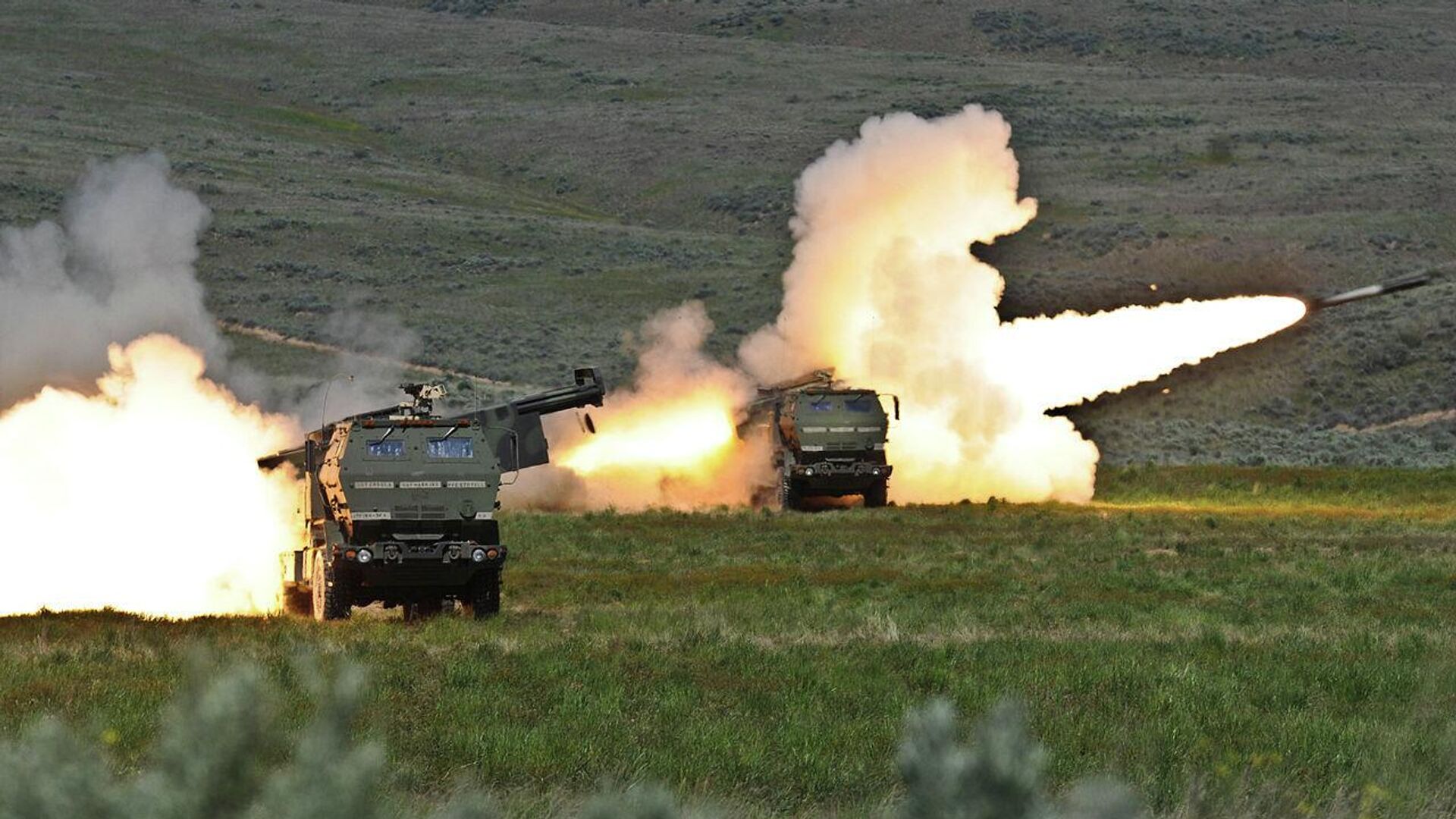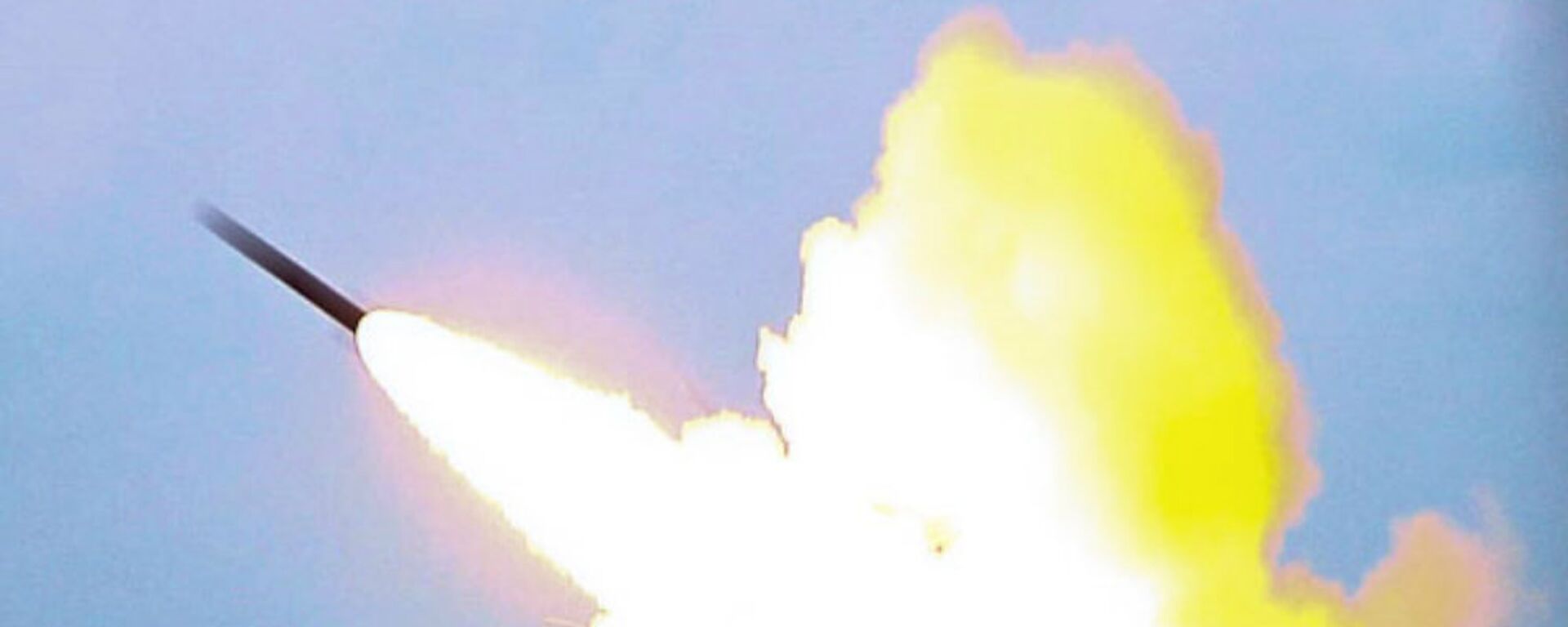Kiev Complains Its US-Gifted HIMARS Rockets are ‘Shooting Blind’
12:47 GMT 29.07.2022 (Updated: 20:56 GMT 19.10.2022)
Subscribe
The United States has delivered a dozen M142 High Mobility Artillery Rocket Systems (HIMARS) to Ukraine, and promises to send at least four more. The Russian military has reported on the destruction of four HIMARS in precision strikes, and accused Kiev of using the powerful weapons to attack civilian areas instead of military targets.
The HIMARS Washington sent to Kiev are a “good first step,” but their accuracy leaves something to be desired without the sophisticated support hardware they get when used by the US military, Anton Gerashchenko, an advisor to the Ukrainian Ministry of Internal Affairs, has complained.
“Presidential advisor Mikhail Podolyak laid out [Ukraine’s military] needs last month: 2,000 troop transport vehicles, 1,000 gun-mounted vehicles, 500 tanks, 300 multiple launch rocket systems, and also the drones and communications equipment necessary to maximize the effectiveness of these systems,” Gerashchenko said in an interview with Newsweek.
“HIMARS and heavy artillery are a good first step, but if we do not have the technology to find and correct targets for artillery strikes, then we’re just shooting blind,” the official lamented.
Gerashchenko also called on Western powers and officials in Kiev to calculate “how much ammunition is available” for Ukraine’s HIMARS and other Western-provided heavy artillery, and how much would be needed “to liberate our occupied territory in the regions of Kharkov, Zaporozhye, Kherson, Donetsk and Lugansk, and then to ramp up industrial production in order to meet the need.”
The Ukrainian military showed off the extent of its effort to “liberate” Donbass territory using HIMARS on Friday, with territorial defense officials in the Donetsk People’s Republic reporting that some 53 people were killed and 75 others injured in a HIMARS strike on a detention center in Yelenovka, DPR, with the facility containing Ukrainian prisoners of war, including members of the notorious ultra-right Azov Regiment.
“Obviously, it is a deliberate shelling fueled by the desire to eliminate those representatives, in particular, Azov, who have begun to testify. There are quite a lot of testimonies, some of which became public, even more were recorded by our investigative bodies,” DPR head Denis Pushilin said. The Ukrainian General Staff denied responsibility for the attack.
Scores of civilians have been killed in HIMARS strikes on cities and settlements across the Donbass and other areas of eastern Ukraine in recent weeks.
Last week, the Lugansk People’s Republic’s Joint Center for Control and Coordination (JCCC) monitoring mission reported that two civilians were killed in shelling of the city of Alchevsk using the US-made weapons system. A week before that, seven people were killed and 40 others injured in a HIMARS strike on the city of Nova Kakhovka in the Kherson region. In early July, the DPR’s JCCC monitors reported HIMARS being used in the city of Snezhnoye in the eastern DPR.
US Military Worried It May Run Out of HIMARS
Earlier this week, retired Marine Colonel and former Pentagon Office of Management and Budget staffer Mark Cancian warned that the US could run out of HIMARS munitions to send to Ukraine in three to four months if it provided more than 12-20 of the weapons to Kiev.
Mark Hertling, a retired Army lieutenant general and former general of US Army Europe, expressed similar concerns in a recent Twitter thread, indicating that the US has limited numbers of HIMARS available, that most of them are already attached to Army and Marine units in preparation for potential military operations. The supply of munitions for the systems is also limited, with about 9,000 of the 200 pound GPS-guided missiles manufactured per year, Hertling explained.
Smart planning consideration of our Department of Defense (& all the nations that are supplying MLRS) is this: How much risk do we take in giving UKR an exceedingly large # of our smart weapons?
— Mark Hertling (@MarkHertling) July 25, 2022
And...
What if, in the near future, we face this or another enemy in a conflict? 9/
“Smart planning consideration of our Department of Defense (and all the nations that are supplying MLRS) is this: How much risk do we take in giving Ukraine an exceedingly large number of our smart weapons? And…What if, in the near future, we face this or another enemy in a conflict?” Hertling asked.
“I’m 100 percent sure I don’t have all the considerations that went into this decision making. But I am also relatively sure those saying ‘give Ukraine everything it wants’ are also not considering several important US national security factors,” the retired commander added.
Last week, a Russian security source told Sputnik that HIMARS operating in Ukraine are being manned by outstaffed career NATO personnel and guarded by private military contractors, and that information regarding their operation was not being transferred to the Ukrainian side due to lack of trust. The source indicated that HIMARS fire is being covered by salvos from less advanced artillery, including Smerch and Uragan, to saturate Russian air defenses.
This week, an officer from Russia’s Air Defense Troops told Sputnik that ground-based air defense units were learning to shoot down HIMARS munitions using the Buk M-3 anti-aircraft missile system, and that the system has already shot down multiple HIMARS rounds in the skies over Donbass.
“HIMARS rockets are the most difficult target we have come across. These shells…fly at a very high altitude. We detect them at an altitude of up to 22,000 meters. The difficulty lies in the fact that their range is short, and the time to make a decision is minimal. Our combat crews valiantly cope with the task of shooting down these targets literally within a space of ten seconds. The effective area of dispersion of these projectiles is tiny, only .1 meters. Therefore, the target is considered to be small and high-speed,” the officer explained.
Developed in the 1990s by US weapons giant Lockheed Martin and introduced into service with the US military a decade ago, HIMARS’ effective firing range varies dramatically depending on the munitions used, from 2-92 km for standard rounds, to 300 km for the US Army Tactical Missile System, which Washington has not yet provided to Kiev despite recent requests to do so.
About 540 HIMARS have been manufactured, and before their use in Ukraine, the weapons were used in the US-led wars in Iraq and Afghanistan, and in currently US-occupied areas of Syria.






